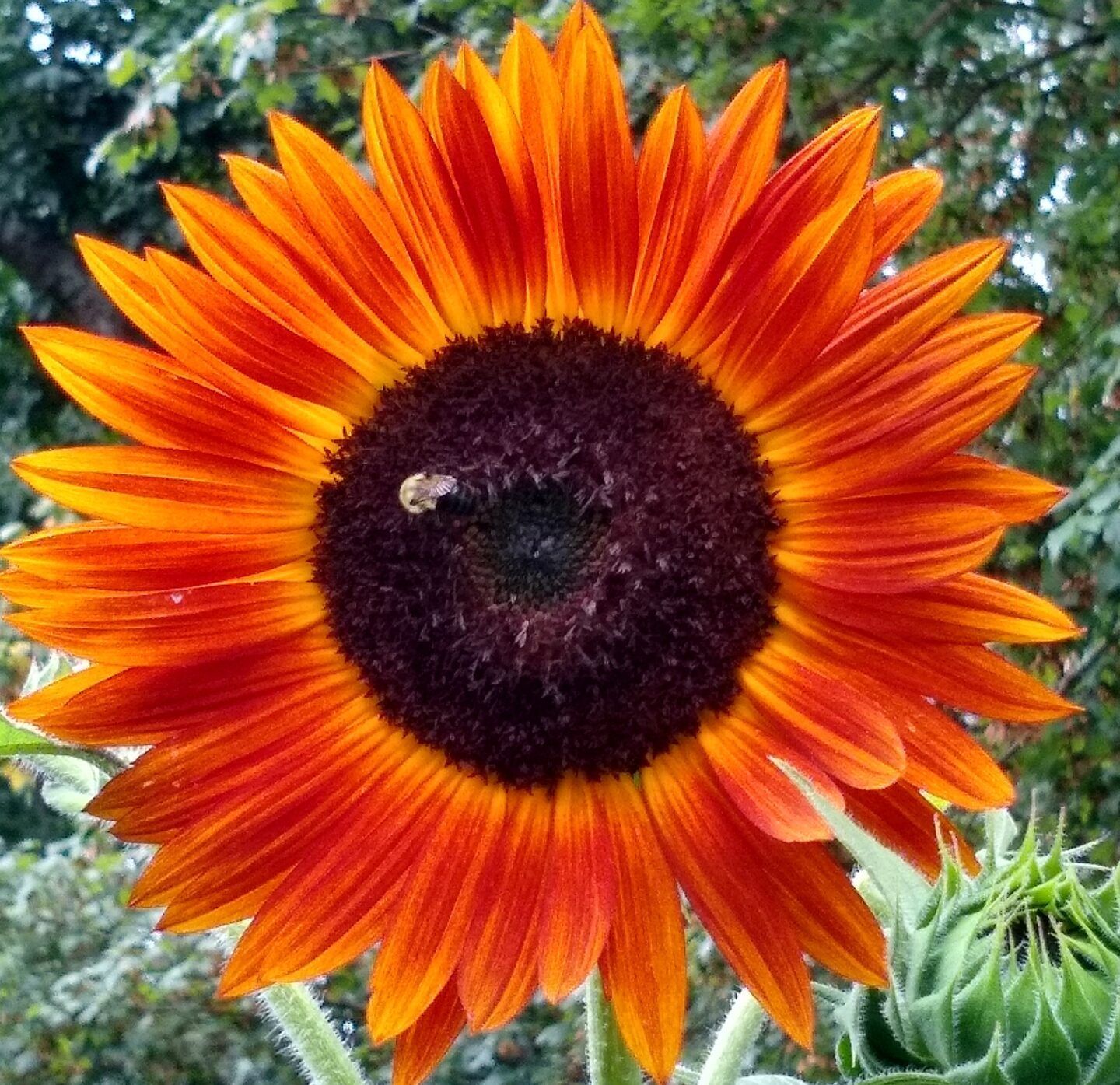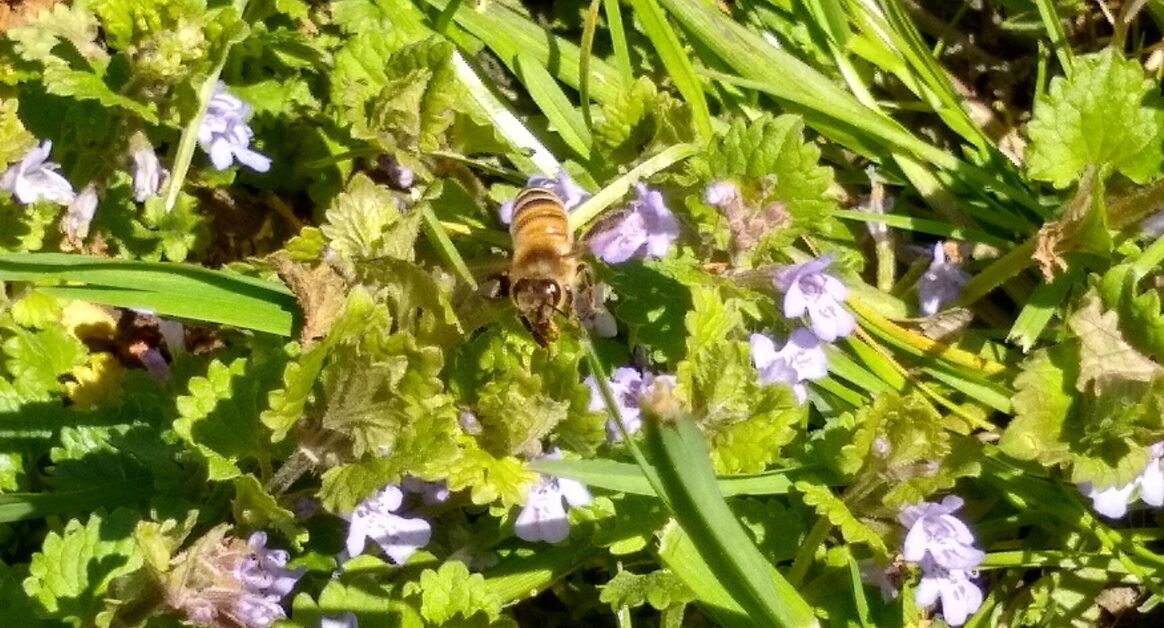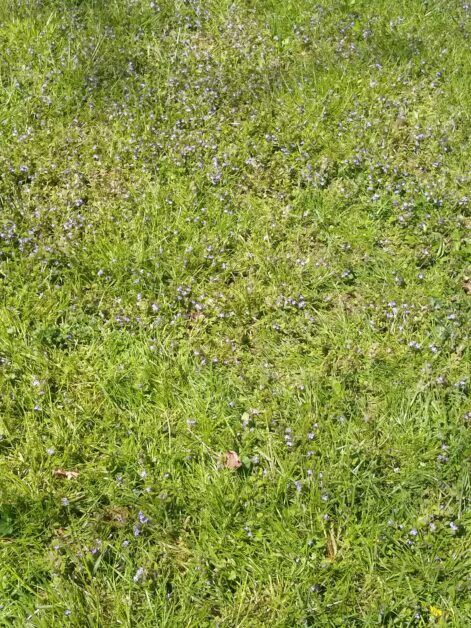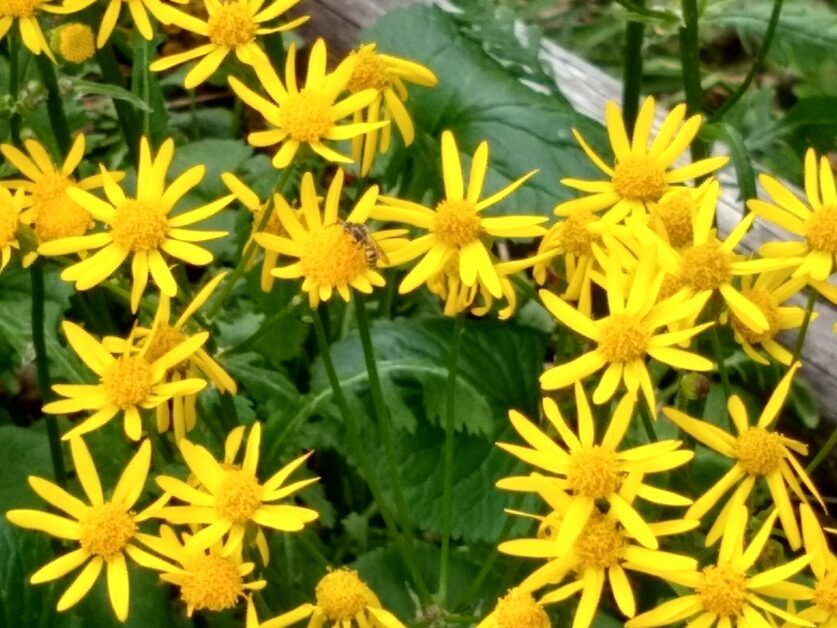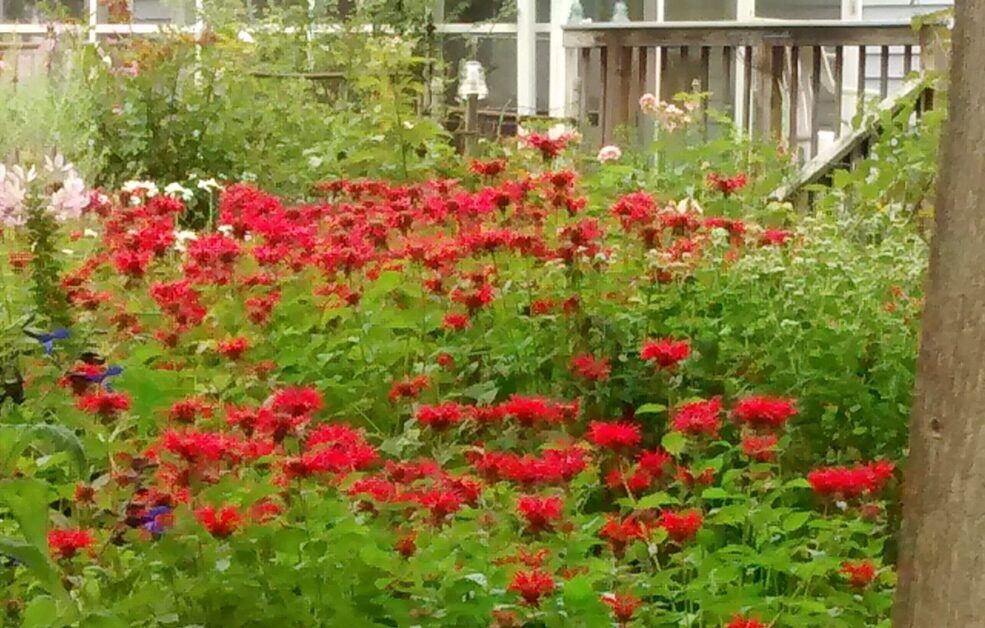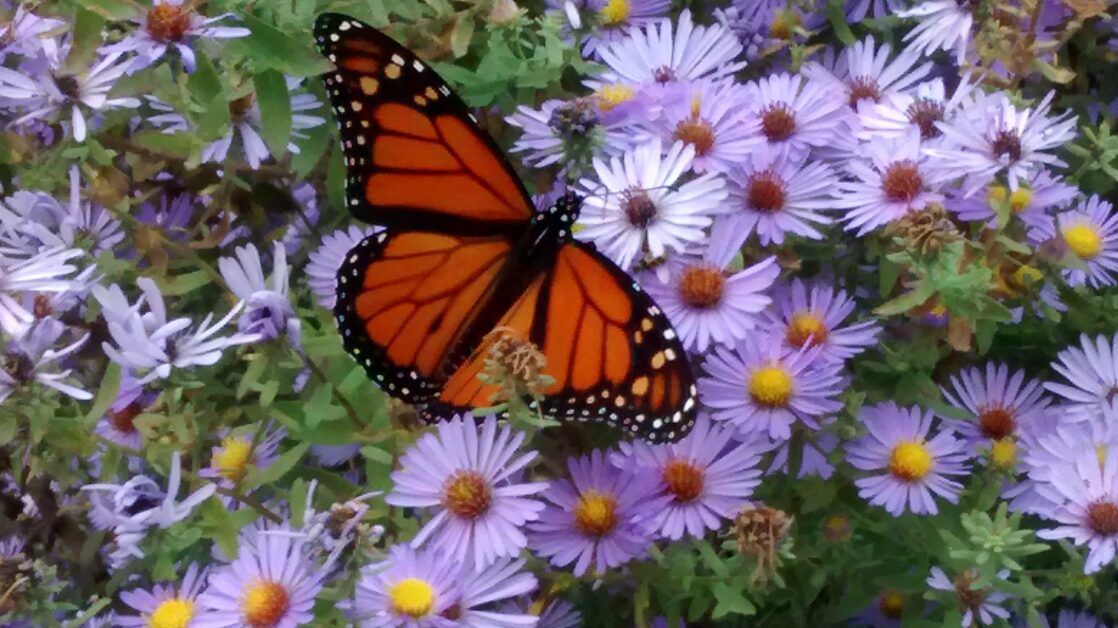So, it’s been a few weeks since I posted. This is what happens to me when I am devoting my writing inspiration to graduate classes! I had intended to post this a little over two weeks ago, so it’s a bit late. However, the season for being kind to bees and other pollinators is all year long. That means you can use these suggestions for any time you are considering planting or taking care of plants in your yard.
About 10 to 15 years ago, we started to plan our decorative plantings a bit more carefully. Like most people, we had picked out flowers we liked, and included a lot of perennials. (If you don’t like taking care of plants, but you do like having them around, native perennials are the best choices; you are mostly limited to seasonal maintenance in the spring and fall.) At that point, I started working more with planting and gardening at the museum I worked at, and researching native plants became a bigger part of my job. As a result, I started looking at using them more at home as well. I am at best a lazy gardener; the less work I have to do for upkeep, the happier I am. I will do a lot of pre-planning to keep from doing maintenance, and I don’t use pots at all, because you need to water them every day, or even twice a day, in the southern heat. For that reason, the more I read about native plants, the better I liked them. Picked to suit a space, they need less watering, less weeding, and provide more for wildlife than any hybrid or non-native species.
The ability to provide spaces and food for pollinators is what I am going to concentrate on for this blog post. Most of the showy, constantly blooming annuals that you can purchase at a plant store are no good to bees and other pollinators. The effect of hybridization often reduces the production of nectar for many plants. The other problem is grass. When people grow grass that looks like carpet (often by using pesticides and herbicides) it decreases the amount of food that pollinators have available to them. While that type of lawn may look good to human eyes, to a bee it looks like a desert.
This is what a bee and other pollinators would consider a nice lawn. It has some grass, but there is a lot of other ‘weeds’ mixed in, many of which are the earliest blooming flowers in the spring. I saw honey bees for the first time this spring in mid-March. By early April, there was enough blooming in the lawn that honey bees, bumble bees, and and native bees like miner bees were getting a lot of nectar from the broad-leafed weeds in the lawn. I know that a lot of people don’t like these type of plants in their lawn. However, you can really see the benefits of them in the spring, before a lot of the flowers that people like to plant have started blooming and you see how many pollinators are using them. The flowers in the photos are from a plant called ground ivy. I will be the first to admit that it doesn’t look the best in the yard, and it will send out runners to plague your flower beds. However, I have made peace with my need to get rid of it just because I don’t like its looks. For me, it is more important to create areas for local pollinators, especially since I need them for food production. I think that is a fair trade-off, especially since it allows me to continue to be a lazy gardener!
When it comes to other ways to help the different species of bees and other insects, there are a number of ways to plant for them throughout the year. Native species of plants will only bloom for certain periods of time during the year, so having a variety that blooms over the span of the growing season takes some planning. My mother and I have looked for plants native to North Carolina, and concentrated on making sure the variety covers March through to late October. There are also lists of plants that are popular with pollinators, and you can pick types that appeal to you and the bees. The best resources to find these plants are usually local Ag Extension agencies or native botanical gardens. If you don’t mind waiting a little longer, seeds are a very economical option for planting. Personally, I don’t like wildflower mixes that you can find in chain seed stores. Often, those seeds might be native somewhere in the US, but not necessarily your area. If you have a huge area you want to plant, they might work, but if you buy several different seed packages of local wildflowers, and mix them up yourself, you’ll usually get a better result. An added benefit is that most native annuals will reseed themselves, no need for you to plant new each year (I told you I was a lazy gardener). For those in NC, a good source of information on native plants is NC State University Extension or the Botanical Gardens at Chapel Hill. If you are wanting to look up plants or resources in other states, one of the best options is the Lady Bird Johnson Wildflower Center in Texas. This site has information that covers all of the US, and you can look up plants by a wide variety of options, such as state, color, size, type, and many others.
In addition to plants, bees can use a few other things, especially if you are trying to help their survival year-round. Leaving some open dirt is good for miner bees and other native bees that use it for nest building. Dead wood, brush piles, and the dead stems of plants left on instead of cutting away in the fall, are also good ways to help pollinators (and other wildlife) have a place to stay over winter or build nests in the spring. If you have a bird bath, put a rock in it that sticks halfway out of the water. This allows bees and other insects to drink during the dry times; they need a way to walk up to the water without falling in, and most bird baths are too deep.
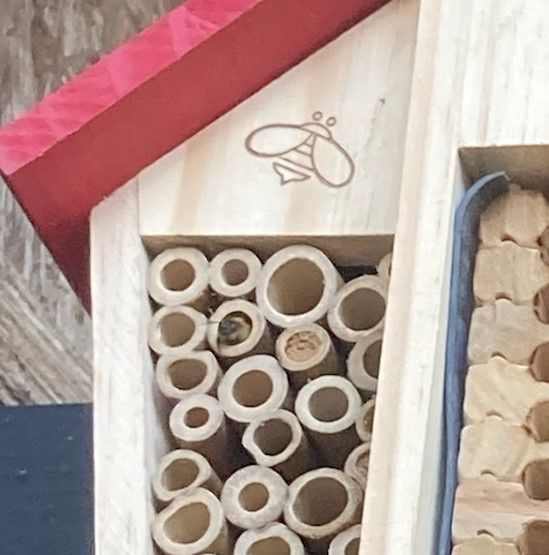
There are also bee houses for native bees that don’t build hives you can put up (just make sure you have some dirt/mud around for them to use). We put one up just this spring, and got it up just in time for the bees to start using it. You can see one of the bamboo openings already closed up with mud beside the bee sticking its head out. This was just three days after we put this house up near the vegetable garden. There are already about 20 openings covered in 3 weeks, so the house got put up just in time! (This is a miner bee. The bees have liked the smaller bamboo openings this year!)
If you want to find out more about pollinators, and how to help them survive and thrive in you yard, the Xerces Society is a good source for information. They have advice for general plantings, pollinator needs, and even a certification system for those wanting to spread the word about a commitment to cultivating pollinators. There is also a lot of information about attracting butterflies, and specifically the monarchs. Here’s another advantage of being a lazy gardener – longer lawns and leaf litter help fireflies, since they spend the daytime at the bottom of grasses and in leaf piles. There is nothing like looking out in the early evening in late May to see the first fireflies rise from the yard and woods. It signals the beginnings of summer! There are a lot of ways to help cultivate pollinators around you. And don’t worry about bees around your house (unless you are allergic to bees; you’ll have to decide what you feel safe doing where you are spending a lot of time outdoors). Those bees don’t care anything about you when they are looking for flowers. (I’ll write a post later this summer about how to avoid wasps, yellow jackets, and others considered dangerous; hint, they’re really not when you consider what they are looking for at different times of the year). As long as you don’t get in their flight path, aren’t swatting at them, and avoid smelling like their food source, they will leave you alone. (Avoid flowery perfumes, shampoos, and sugary smells if you plan to be outside with the bees; if you do, it’s not their fault if they come take a look!) I’ve stood watching bees at flowers from less than a foot away, and they never paid the least attention to me. Watching bees is one of the great pleasures to having a pollinator garden.

